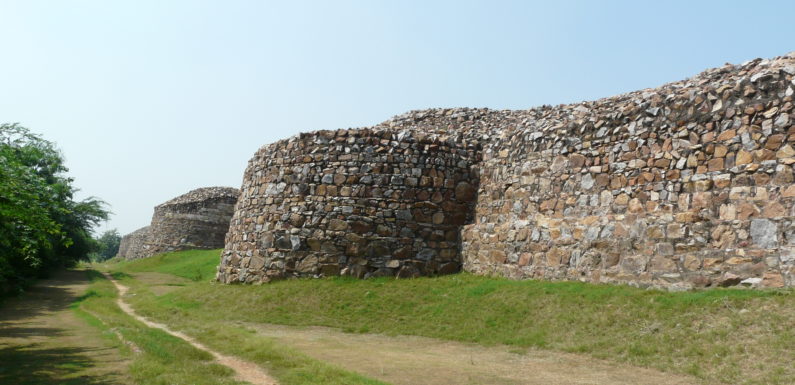
The Chauhan kings of Ajmer, Prithvi Raj Chauhan also known as Rai Pithora conquered Delhi, from Tomar Rajputs in 1180. Then Prithvi Raj Chauhan constructed the Qila Rai Pithora in 12th century. It also contains much older Lal Kot, which was built earlier in 8th-century by Tomar Rajput ruler, Anang Pal I.
The Qila Rai Pithora is a magnificent example of the legacy of the Chauhan dynasty in India. The Qila has also been known to be the first city of Delhi. In this Qila you can see the statue of Prithviraj Chauhan. At this juncture, the Qila has lost its sheen and the crumbling walls have been the element of proof that the royalty and grandeur of the Chauhan clan has been long lost in the history pages. The Qila is very high with average height measuring up to 60 feet.
The Qila or Fort is a living example of battles fought between Mohammad Gauri and Prithviraj Chauhan and how this beautiful fort was ransacked. In the present days, you can only see the walls of this beautiful fort which are scattered across South Delhi, can be seen in present Saket, Mehrauli around Qutab complex, Kishangarh and Vasant Kunj areas.
How To Reach?
To reach to this historical monument, you need to get down at the Malviya Nagar Station and cross the road to take the Press Enclave Road. Once you keep walking on the Press Enclave Marg, a park would be visible and it marks the entry point to this qila.
Timings of Qila Rai Pithora?
This Qila is open for public viewing on all days of the week. Travelers can visit at any tie between 7:00 a.m. to 7:00 p.m. and explore the might of this qila.
Entry Fee of Qila Rai Pithora?
No cost is charged to explore this fort. You can visit any place and explore this region
Other details:
You can explore other areas in the meantime after visiting this fort, top areas in South Delhi are not far away from this place. Garden of senses, Iron Pillar, Aludin Khilji Tomb and Iltutmish Tomb are few areas which you can hit upon the completion of the visit at Qila Rai Pithora.

